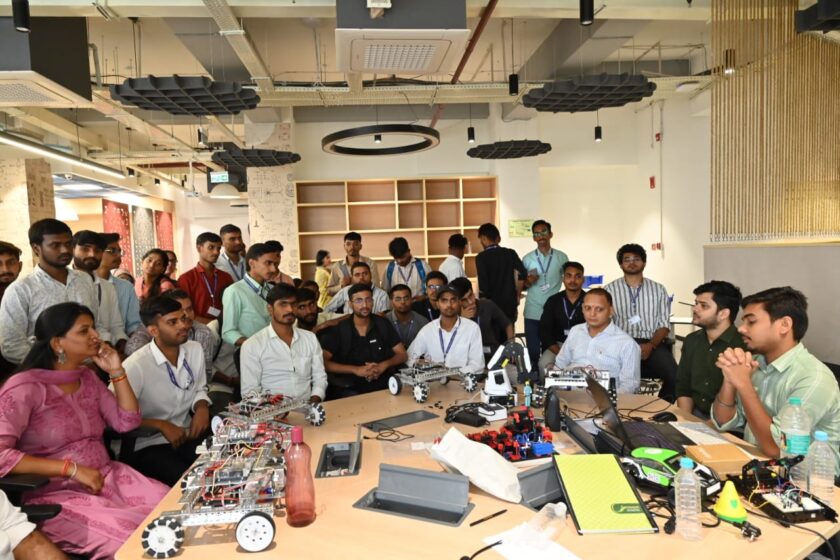Lucknow – Recombinant DNA (rDNA) technology, which involves combining DNA from different organisms to create genetically modified organisms (GMOs), is significantly enhancing the quality of food worldwide. By improving crop resilience, nutritional content, and shelf life, this technology is addressing global challenges like food security, malnutrition, and climate change, while also sparking debates on safety and ethics.
Enhancing Crop Resilience and Yield
rDNA technology allows scientists to introduce specific genes into crops to enhance desirable traits. For instance, drought-resistant varieties of wheat and rice have been developed by inserting genes that help plants conserve water, a critical adaptation as climate change intensifies. According to a 2024 report by the International Service for the Acquisition of Agri-biotech Applications (ISAAA), GM crops with pest resistance, such as Bt cotton and Bt corn, have reduced pesticide use by 37% globally, improving both yield and environmental sustainability. In India, the adoption of Bt cotton since 2002 has increased yields by up to 24%, as noted by the Indian Council of Agricultural Research (ICAR).
Dr. Swati Mishra, a biotechnologist at the Indian Agricultural Research Institute (IARI), stated, “rDNA technology helps us create crops that can withstand biotic and abiotic stresses, ensuring stable food production even in adverse conditions.”
Improving Nutritional Content
One of the most impactful applications of rDNA technology is biofortification—enhancing the nutritional value of crops. Golden Rice, engineered to produce beta-carotene (a precursor to Vitamin A), addresses Vitamin A deficiency, which affects over 250 million children worldwide, according to the World Health Organization (WHO). In 2024, the Philippines and Bangladesh scaled up Golden Rice cultivation, with early reports indicating a 30% reduction in Vitamin A deficiency in pilot regions.
Similarly, rDNA has been used to develop iron-fortified beans and zinc-enriched wheat, tackling micronutrient deficiencies in regions like Sub-Saharan Africa and South Asia. In Uttar Pradesh, where malnutrition remains a concern, the state government is collaborating with ICAR to introduce biofortified crops like zinc-rich rice. “These crops can significantly improve public health outcomes,” said Dr. Anil Kumar, a nutrition expert in Lucknow.
Extending Shelf Life and Reducing Food Waste
rDNA technology also improves food quality by extending shelf life, reducing post-harvest losses—a critical issue in India, where up to 40% of produce is wasted, per a 2023 Ministry of Agriculture report. The Flavr Savr tomato, the first GM food approved in 1994, was modified to delay ripening, and modern advancements have built on this. In 2024, Indian scientists developed a GM tomato variety with a shelf life of 45 days (compared to 15 days for conventional tomatoes) by silencing genes responsible for ethylene production, which triggers ripening. “This technology can ensure fresher produce reaches consumers while reducing waste,” said Dr. R.K. Singh, Director of UP Horticulture.
Enhancing Taste and Aesthetic Appeal
rDNA technology is also being used to improve sensory qualities like taste, texture, and appearance. For example, GM apples like the Arctic Apple, engineered to resist browning by silencing polyphenol oxidase genes, maintain their visual appeal and taste longer after being cut. In India, rDNA is being explored to enhance the sweetness of mangoes and the flavor profile of basmati rice, making them more competitive in global markets. A recent post on X by @AgriInnovate highlighted how GM basmati rice with enhanced aroma genes fetched a 15% premium in international markets in 2024.
Applications in Animal Products
Beyond crops, rDNA technology is improving the quality of animal-derived foods. Genetically modified salmon, developed by AquaBounty Technologies, grow twice as fast as conventional salmon due to the insertion of a growth hormone gene from Chinook salmon. Approved by the FDA in 2015 and now sold in Canada and the US, these salmon provide a sustainable protein source with consistent quality. In dairy, rDNA is used to produce recombinant bovine somatotropin (rBST), which increases milk yield in cows by 10-15%, according to a 2023 USDA report, though its use remains controversial due to animal welfare concerns.
Challenges and Ethical Concerns
Despite its benefits, rDNA technology faces challenges. Critics argue that GM foods may pose health risks, though over 2,000 studies, including a 2016 National Academies of Sciences report, have found no evidence of harm. Environmental concerns, such as the potential for GM crops to crossbreed with wild species, also persist. In India, public resistance to GMOs remains strong—protests delayed the approval of GM mustard in 2023, despite its clearance by the Genetic Engineering Appraisal Committee (GEAC).
Dr. Vandana Shiva, an environmental activist, stated, “We must prioritize ecological balance and farmer autonomy over corporate-driven GMOs.” On the other hand, proponents like Dr. Mishra argue, “The science is clear—GM foods are safe and necessary to feed a growing population.”
The Road Ahead
In Uttar Pradesh, where agri-tech is already advancing with initiatives like AgriVoltaics and high-tech nurseries,
rDNA technology could further enhance food quality. The state’s collaboration with the International Rice Research Institute (IRRI) in Varanasi is exploring GM rice varieties tailored for local conditions. Chief Minister Yogi Adityanath, speaking at a recent agricultural summit, emphasized, “Technology like rDNA can make UP a leader in producing high-quality, nutritious food.”
Globally, the rDNA market in agriculture is projected to grow at a CAGR of 8.4% from 2024 to 2030, driven by demand for sustainable food production, per a 2024 Grand View Research report. As regulatory frameworks evolve and public awareness increases, rDNA technology is poised to play a pivotal role in ensuring food quality, security, and sustainability—potentially transforming diets worldwide.
---------------------------------------------------------------------------------------------------






